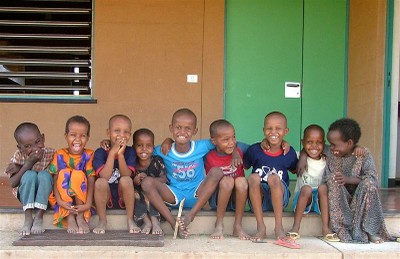Child sponsorship background from Gode, Ethiopia
 SOS Children's Village Gode
SOS Children's Village Gode
The site where SOS Children's Village Gode has been constructed, was
donated by the Government of Ethiopia.
Construction was finally completed in August 2004 after several years.
This was due to the extremely difficult working conditions at the
construction site. SOS Children's Village Gode is situated on the banks
of the river Wabishebeelle, about two kilometres from the centre of
Gode. It comprises 12 family houses, the village director's house,
accommodation for the SOS aunts (SOS aunts take care of the children
when SOS mothers are on leave), a guesthouse, a workshop, and an
administration and service area. A total of 120 children can be
accommodated at this SOS Children's Village.
Other SOS Projects in Gode
In September 2005, an SOS Primary and Secondary School was opened. The school provides education for some 420 pupils from the SOS Children's Village and its vicinity. It comprises 12 classrooms, a library/computer room, a workshop, a canteen, a multi-purpose hall and administrative rooms.
The SOS Nursery School, which is attached to the SOS Children's Village, was also officially opened in September 2005 and offers places for about 105 children. The SOS Nursery School has a playground of its own.
In order to improve the basic health care situation in south-eastern Ethiopia, an SOS Medical Centre has been in operation on temporary premises since 2000. Construction of a permanent facility was started in January 2003 and finished in the autumn of 2005. The SOS Medical Centre comprises a waiting hall/reception, three examination rooms, a pharmacy, a sterilisation room, and an administration area. About 4,300 people receive medical treatment at the SOS Medical Centre annually.
Background to Gode
Gode has a population of approximately 69,000, mostly a mixture of Somali and Amhara. Gode has a population of around 69,000 with the majority made up of Somali with Amhara. There is a high illiteracy rate - more than 70%. The local economy depends on agriculture and nomadic pastoralism. In 1999, the population was affected by severe drought and famine and starvation have prevailed in the area since. Malnutrition and general lack of health services contribute to the high infant mortality rates. Most children here are unable to attend school, with only 12.79% of primary school-aged children enrolled and at secondary school level attendance rates are 2.2%.

 Return to Schools Wikipedia Home page…
Return to Schools Wikipedia Home page…
